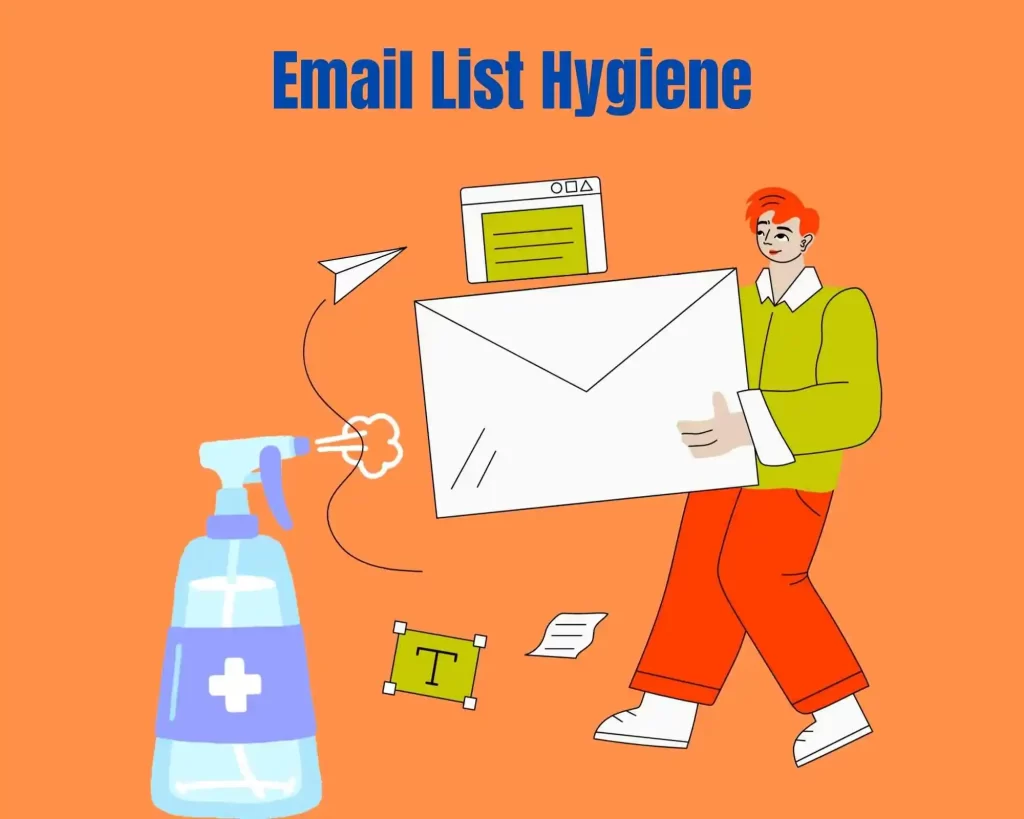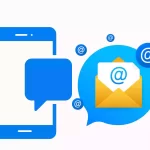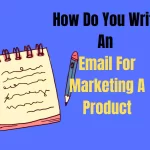If you plan on using email marketing to promote your business, you have to fully understand email list hygiene, how to practice it fully, and why it is so vital.
I used to make the error of sending bulk emails to anybody who had signed up for my newsletter. But, I rapidly discovered that this technique could have been more productive. It was also harmful to my brand’s image.
Email list hygiene is the technique of cleaning up your email list on a regular basis to ensure that it only contains active, engaged subscribers who are interested in your content.
I chose to write this email list hygiene blog post. In order to discuss the importance of email list cleanliness and provide practical techniques for keeping your email list clean and successful. I’ll go through everything from list segmentation to eliminating inactive email addresses.
Read our guide on how to increase your email conversion rate here.
Now, take a cup of coffee, and let’s get started.
What Is Email List Hygiene
As I said earlier. Email list hygiene is the practice of cleaning up your email list on a regular basis to guarantee that you’re only delivering messages to individuals who wish to receive them. This includes eliminating inactive subscribers, cleaning your list of fraudulent or incorrect email addresses, and delivering only relevant messages to your email list.
To have a good knowledge of email list hygiene, marketers must have a clear understanding of the difference between hard and soft email bounces. When an email address no longer works or when someone shuts their email account, hard bounces occur. A soft bounce, on the other hand, happens when the email still functions but the system sends back a response, such as an out-of-office reply or a notice informing you that your email was not recognized.
What Is Good Email List Hygiene?
A good email list hygiene means regularly cleaning your email list by removing inactive or bounced email addresses and ensuring that your subscribers have opted-in to receive your emails, which can help improve email deliverability and engagement. Maintaining good email list hygiene can help you stay compliant with anti-spam laws and avoid damaging your sender’s reputation.
But why should you clean your email list?
Why Is Email List Hygiene Important?
Now that we’ve learned what email list hygiene is, why should you clean your email list?
Sending emails to individuals who are interested in something other than your content or items is a waste of your time and resources. It may potentially harm your brand image if consumers start labeling your emails as spam or unsubscribing.
I learned the hard way exactly how crucial email list hygiene can be
Frequent email list cleanliness is necessary to maintain a good sender reputation and guarantee that your emails reach your subscribers’ inboxes.
It enables you to deliver targeted emails to your subscribers. By segmenting your list, you may send emails to specific groups of subscribers who have demonstrated an interest in certain subjects or items. This leads to increased engagement and, eventually, better outcomes.
Another key part of email list hygiene is customization. Delivering customized emails that cater to the individual interests and preferences of your subscribers helps to create a solid connection with them. This will not only develop confidence but also guarantee that your emails are not labeled as spam and are given the attention they deserve.
In today’s extreme competition in emailing, making your emails stand out is crucial. Which email list hygiene can help with this?
Because Email service providers are armed with advanced algorithms that filter emails based on sender reputation, open email rates, click rates, unsubscribe rates, and the number of incorrect email addresses on the list.
Cleaning up your email list on a regular basis helps to boost the returns on your email marketing efforts. It ensures that you are only sending emails to subscribers who are interested in your content or products.
Email List Hygiene: How Do You Start An Email Cleaning?
Here are six steps to cleaning up your email list.
1. Feedback analysis
After each email campaign, assess the answers you get. Analyze the reasons for the answer to identifying the next step (is your email locked? Is the addressee no longer using that email address?).
Delete those email addresses that are practically unresponsive from your email list. It’s also a wonderful technique to find and repair errors (for example, “.con” instead of “.com”)
2. Handle long-term non-receiving email addresses.
If you’re using an email marketing service that doesn’t come with automatic confirmation, this can be managed on your behalf. If not, you have to do it yourself – not least because you want to maintain a clean email list: It’s required by law.
3. Monitor “reply to” addresses.
Many email users shy away from utilizing the long-term opt-out option since spammers exploit it as a mechanism to authenticate an email address rather than as a genuine opt-out. Hence, identify those who have no need to receive your emails from their answers and eliminate those addresses completely.
4. Check email open rate.
You might think your email list is completely clean but take a closer look. Has your email open rate fallen in six months or a year?
Over time, consumers lose interest in a given sort of goods, or it may be because they relocate, change jobs and no longer require your services, but they have yet to become refusers.
Long-term email. Based on their confirmation, you may conclude that these folks have a need to receive your emails, but in fact, they only make your email list larger.
Suppose you can’t get them to come back to you. The best method is to erase and move on with others.
5. Delete inactive subscribers
When it comes to email list cleanliness, email list cleaning is a critical step.
If you have a large number of subscribers who are no longer active on your list – they haven’t read your emails in a long time or haven’t clicked any of your links in the email – it may be time to let them go.
Never, however, deactivate your subscribers before sending them a re-engagement email. This allows them to remain on your email list if they are still interested but have yet to have the opportunity to read your communications.
Perform this step with caution and seldom. People are often busy, and even if they want to hear from you, they do not have the time. Customers will only lose interest if you continue to remove them from the list with notice.
It would be best if you also investigated the root reason for low email interaction.
6. Rebuild your email list.
When you delete unproductive email addresses and persons, who have no need, of course, you will want to rebuild your list with a fresh individual who has a desire and motivation for your goods. Building your list is vital.
Read our guide on how to get customers’ emails easily.
Make it easy for the individuals interested in your email, so they may contact you, your brand, or your services wherever they are — based on your website or the information in your email.
It’s also great for them to choose how they want to get in touch with you (offers, promotions, coupons, etc.) and how often (weekly, monthly).
Read Also the best time to send an email here.
If you haven’t sanitized your email list in a long time, the first time will be a bit of a challenge, but the next time it will be much simpler.
Take the time to follow up on an email campaign or once a month to find out who is interested in your emails, and examine your email open rates and response rates, therefore removing the poor ones. An email address is not necessary.
Your email list may be shorter, but your job will be more efficient.
How Often Do You Clean Your Email?
Cleaning your email list is an important task that can help improve your email marketing efforts. However, the basic rule of thumb is that you should clean your email list every six months. But it does work like that anymore. How often should you clean your email list? Really depends on a few factors.
1. Frequency of your email mailings.
If you send emails every day, you should clean your list more regularly than if you only send emails once a month. This is because the more often you send emails, the more probable your list may become outdated or include incorrect email addresses.
2. Engagement rates.
If your open and click-through rates are continually poor, it might be a hint that your email list needs to be cleaned. Low engagement rates might indicate that your emails are not reaching their intended recipients or that they are uninterested in your content.
Every three months, I use to wipe up my email list. This helps me to keep track of any changes or revisions to my subscribers’ email addresses and guarantees that I only send emails to individuals who want to hear from me. This improves my engagement rates and the efficacy of my email marketing campaign.
The Benefits of Email Hygiene for Businesses
Businesses and individuals must practice proper email list hygiene. These are some ways that organizations might benefit from good email hygiene:
Better Communication: Businesses may interact more effectively with their customers and employees while keeping their inboxes clean and organized. Businesses may develop trust and sustain great relationships by replying to emails swiftly and clearly.
Efficiency Gain: By automating email sorting and removing superfluous communications, businesses may save time and boost efficiency. This may boost productivity by enabling employees to concentrate on vital activities.
Reduced Risk: Practicing proper email hygiene may help your company avoid security concerns and data breaches. By removing spam and questionable emails, businesses can protect crucial data and preserve consumer confidence.
Conclusion
In conclusion, taking care of your email list hygiene is important for every business and individual that wants to develop a lasting connection with its consumers.
It is important you note that You can increase your email deliverability, communicate with your subscribers more effectively, and ultimately produce better outcomes for your company by following the ideas I’ve offered in this post.
Remember that putting forth a little effort to manage your email list may go a long way toward establishing trust and loyalty with your consumers.





